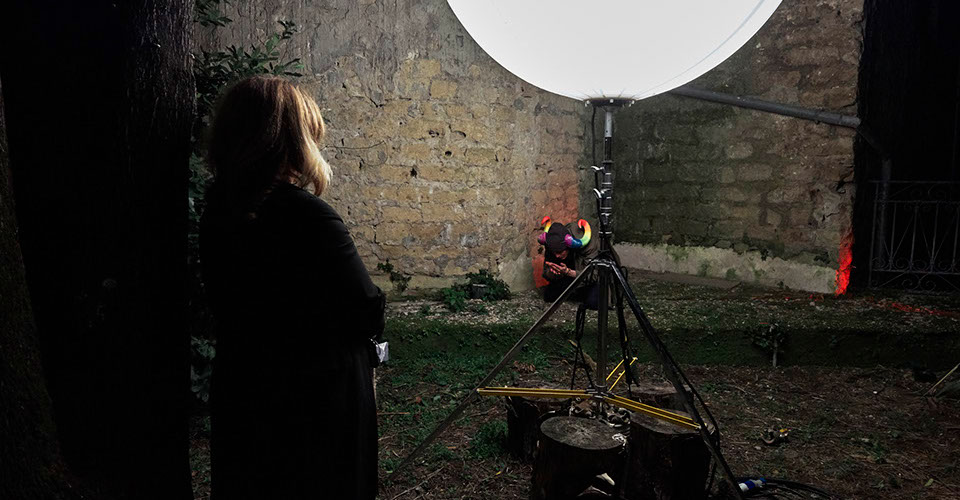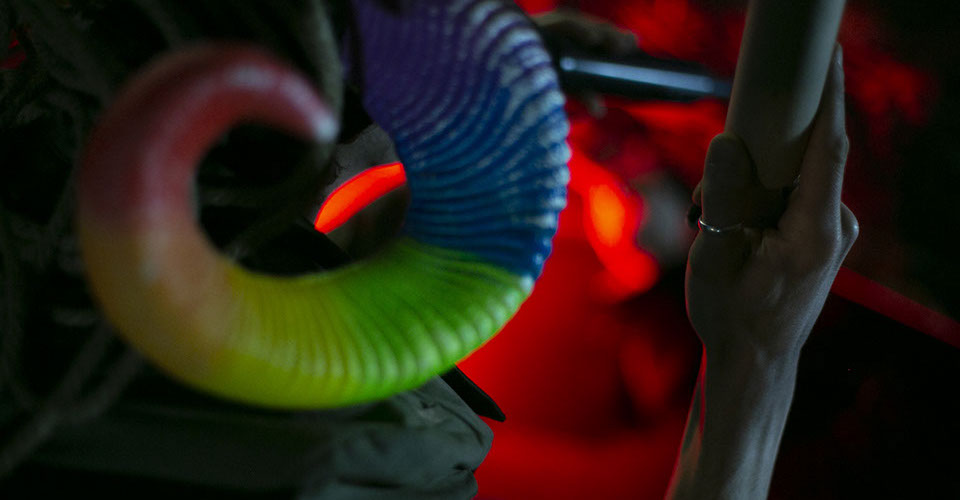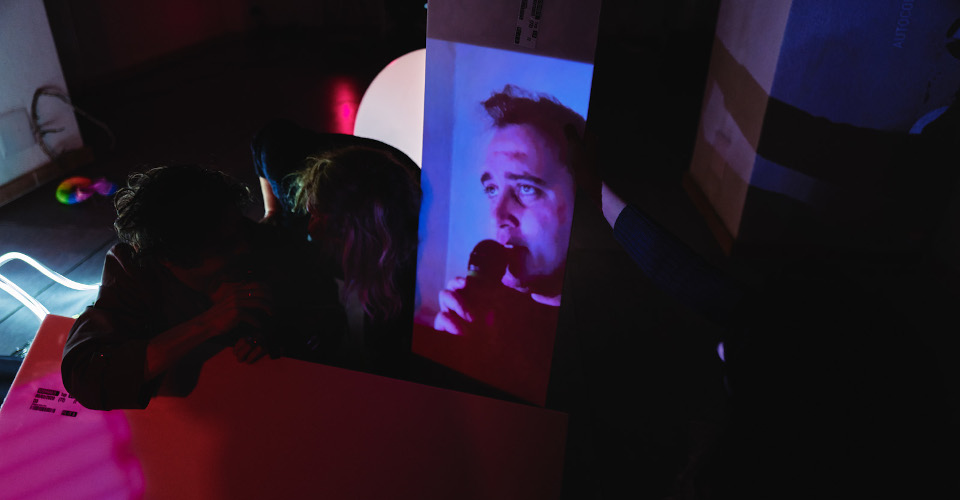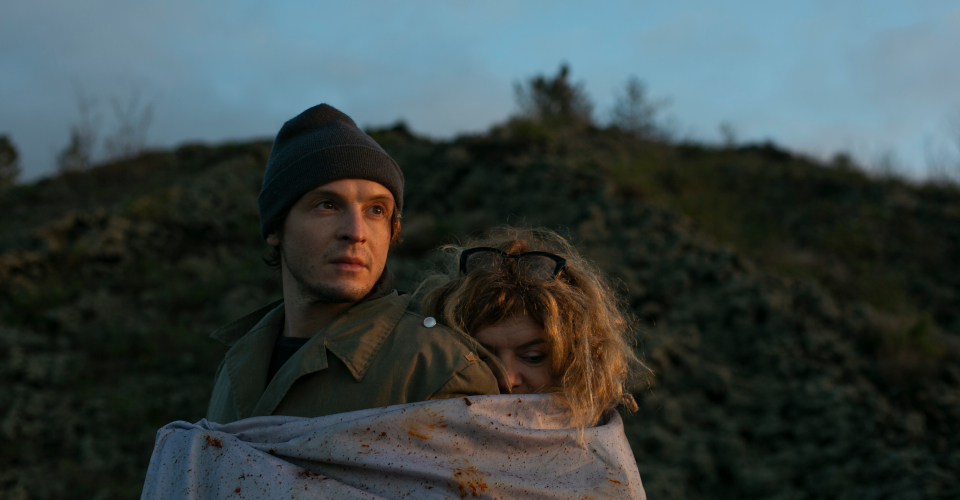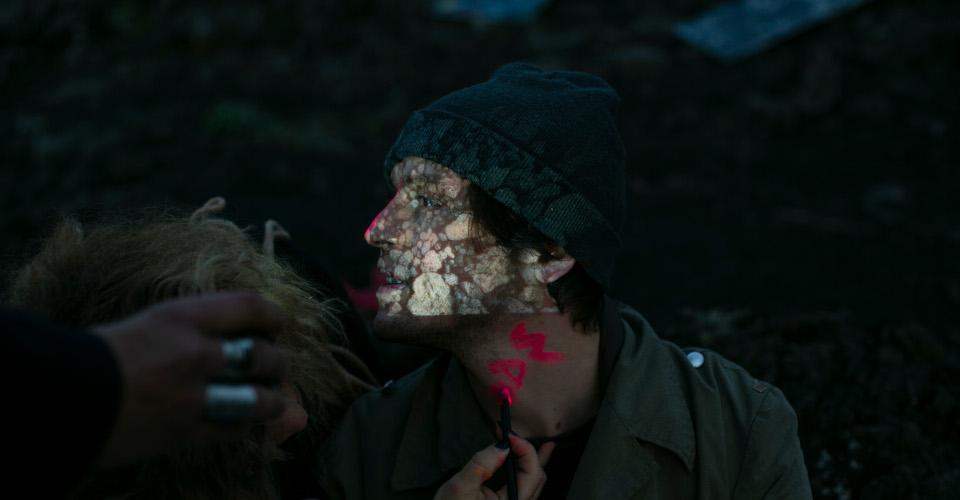ORESTE WILL BE BACK
A MULTIDISCIPLINARY PROJECT WITH LIVE MUSIC, LIVE PHOTOGRAPHY, LIVE PROJECTIONS, LIVE PERFORMANCE, LIVE FILMING.
PERFORMANCE – SPECTACLE – LIVE MUSIC – VIDÉO – PHOTOGRAPHIE – EXPÉRIMENTATION AUTOUR DE LA TERRE DU SOL DE L’APPARTENANCE.
FR C’est le début d’un nouveau projet
c’est une performance live
c’est de la musique live
c’est de l’art et de la photographie
c’est un film
c’est le prochain chapitre d’une nouvelle série
c’est le pouvoir des rencontres passionnées et créatives.
Dans la tragédie et dans la Bible, les enfants sans liberté changent le sort de générations entières. Ils inventent de nouvelles révolutions. Ils parlent d’une possible utopie comme dans les années 60, à la Renaissance et dans la Grèce antique. Dans cette installation performante avec son émergence spontanée dans différents lieux de création et de recherche, les protagonistes veulent se libérer mais les sentiments de culpabilité incarnés par des visions horribles les bloquent. C’est là que la recherche d’Oreste pour ses racines commence, un voyage vers différentes villes qui lui sont étrangères, et son désespoir pour le manque d’une terre qui n’a pas voulu de lui, une famille inexistante et un monde semé de malaise.
Le choix d’un titre pour l’avenir : Oreste reviendra et nous fera encore croire que cette révolution est possible. À une époque où la décence humaine a disparu, où le président des États-Unis parle de guerre via Twitter, à une époque où les belles villes merveilleuses où nous vivons et où nous allons vivre avec ce travail, et dans lesquelles nous avons tous vécu, Beyrouth, New York, Paris, Naples etc … sont ensanglantées par la violence et la peste, même si on ne le perçoit pas comme tel! Qu’est-ce que la liberté pour les enfants de cette époque ?
Oreste sera de retour, il reviendra, des pages du mythe à nos jours, ce personnage qui apporte sa révolution à nos portes et à nos villes. Qui monte à nos fenêtres, regarde et nous parle. Oreste est celui qui revient et, comme nous, il sent qu’il n’appartient pas à ce monde dans un sens total, il veut le reprendre et nous parle de son amour pour la terre et pour son prochain. Oreste reviendra et sera le même homme que nous recherchions hier quand nous étions plus jeunes et que nous ne savions toujours pas ce qui allait se passer.
Comment peut-on changer notre destin ?
Quel rôle peut-on jouer dans le cadre d’une possible révolution ?
Ces questionnements m’ont poussé à réunir des artistes passionnés et que je ressens très proches de mon idée de création engagée, critiques sur notre époque, cherchant à avoir une vraie fonction de changement social à travers le dialogue et le partage des idées.
Le résultat est la création d’une intimité unique sur scène et la capacité de traverser, à chaque improvisation, des thématiques actuelles en passant par le mythe.
Voici les Chapitres de la performance et de l’installation improvisée et créée ou filmée à la Ménagerie de Verre à Paris, dans la résidence Kulturfactory face au Vésuve ainsi qu’à la Fondazione Mondragone de Naples
1: Outsiders / Insiders
2: Liberare La Terra Dagli Assassini / Libérez le sol des meurtriers
3 Δίκη
4 Maison Maudite
5 Ius soli
Ma première impulsion a été de collaborer avec le photographe Giovanni Ambrosio, dont le récent travail sur le thème du Ius soli, comme le mythe d’Oreste, interroge nos rapports à la terre, à l’hérédité, aux droits et à l’appartenance. J’ai rencontré l’acteur Paul Spera en 2019 et nous avons commencé à partager nos questions et nos idées sur le mythe et sa pertinence pour notre époque. Oreste est tourmenté par son destin matricide. Il est le fils d’un roi; il est aussi esclave de son destin, fondamentalement non libre. En héros tragique, Oreste est en perpétuelle quête de ses origines et de ses racines. Abandonné par sa mère, il a grandi sur la route; il retourne dans un pays qu’il ne reconnaît pas, une terre couverte de sang. C’est un hors-la-loi, un étranger, un migrant; il n’a le droit d’exister nulle part. Sa génération a été lentement étouffée par la génération précédente.
A partir de cette réflexion, j’ai réuni l’équipe qui avait travaillé sur Médée Visions et j’ai imaginé un projet spécifique qui évolue au fil des années, poussé par notre urgence à être des artistes militants aujourd’hui. La performance est improvisée, mais chaque étape de la création est documentée par des installations vidéo créées par Maria Mazzella, Alessia Siniscalchi et Giovanni Ambrosio et la musique électronique live de Phil St. George.
Paulina Mikol ajoute à nos textes improvisés, son écriture originale qui est enregistrée et diffusée dans différents espaces tout au long de la performance.
La pièce est complétée par une conception d’éclairage en direct par Benjamin Sillon et des projections vidéo en direct qui nous rappellent que même si nous sommes en train de jouer, notre destin doit être imprimé sur nos corps. Nous sommes les seuls auteurs de notre avenir.
J’aurais voulu t’appeler
durant la nuit
Te parler
Et te demander d’allumer ta webcam
Te parler
Ou alors juste te regarder dormir
Te dire que je te cherchais
Dans la nuit, dans les rêves, dans la forêt
Je te cherchais
Sans te trouver
J’hurlais ton nom
Sans que personne puisse l’entendre
EN is the start of a new project
is a live performance
is live music
is art and photography
is a film
is the next chapter of a new series
is the power of passionate and creative encounters
Daughters and sons yearning to be free can change the destiny of an entire generation. Their strife goes as far back as classical tragedy; it’s as bygone as the Bible. They invent new revolutions. They speak of utopia, as they did in the 1960’s, in the Renaissance or in ancient Greece. In this spontaneous performance installation (everywhere from sea to land), our protagonists desire to break free, but their guilt, and their horrific hallucinations, hold them down. Thus begins Oreste’s quest to find his roots and quest of justice. A voyage that takes him through cities where he doesn’t belong, a desperate wandering through lands where he isn’t wanted, a search for a nonexistent family in a world brimming with angst.
What is the new world like?
Are you an assassin or an avenger?
What role can we play in a possible revolution?
How can we reclaim our land and our rights?
What is your right? What is ius soli?
These questions led me to bring together passionate artists, personally close to my idea of committed creation, critical of our time, seeking a real role in social change through dialogue and the sharing of ideas.
The project is completely improvised and site specific.
Films and photographies become part of the work as an archive of the creative process witnessing the evolution of myth through different times.
Particularly interesting our recent residency close to Vesuvio where we explored the relationship with the land and the elements . We spoke with fishermen we touched the lava. The work is resumed in 5 different chapters that can be seen during the performance but also recognized in the video installations and photographies.
The order can be casual.
1: outsiders / insiders
2 : liberare la terra dagli assassini / free soil from murderers
3 : Δίκη
4 : Maison Maudite
5 : ius soli
My initial impulse was to collaborate with photographer Giovanni Ambrosio, whose recent work on the theme of Ius soli, like the myth of Orestes, questions our relationships to land, heredity, rights, and belonging. I met actor Paul Spera in 2019, and we began sharing our questions and ideas about the myth and its relevance to our times. Orestes is tormented by his matricidal destiny. He is the son of a king; he is also a slave to his fate, fundamentally unfree. As a tragic hero, Orestes is on a perpetual quest for his origins and his roots. Abandoned by his mother, he has grown up on the road; he returns to a country he does not recognize, a land covered in blood. He is an outlaw, an alien, a migrant; he has no right to exist anywhere. His generation has been slowly suffocated by the generation before.
Oreste fights with ropes. He calls to Electra his sister, friend, lover. She recognizes him. He wants to show her a new world. Share this possibility. Free their land from murderers. They hide behind images of abandoned soil (photographs by Giovanni Ambrosio’s ius soli and Imma di Lillo’s archives).
They question the audience and people they meet during their performative trip. A site specific experience from La Ménagerie de Verre in Paris to different places and foundations ( fondazione Mondragone Napoli , kulturfactory) .
Each places creates impulses for a new relationship with the material . There are no rehearsals but each residential experience is a new creative step.
The murder of Agamemnon creates a disturbing atmosphere: the tyrant king is dead, the tyrant queen has taken his place, the citizens feel lost, submerged in blood.
Oreste dances in the blood. La maison is maudite. The house is haunted. Oreste writes about this curse. His voice spreads to each corner.
We filmed the haunted house and we created a new chapter
Electra was never able to communicate authentically with her father. Faced with his death, she realizes her deep lack of, and need for, freedom. Her own freedom, but also that of others: of slaves, of foreigners, of the world.
Electra and Orestes scream “Justice!” with people from the streets to the wind, to the sea, to the mountains.
We filmed the chapter Δίκη by the sea .
The recordings of sounds and live captations of spectators walking in the performative space, create the sensation of an intimate relationship with the land, of an impossible desire to transcend the horizon to create an Utopia. We realize that it is impossible to free soil from murderers ( chapter 2)
Orestes realizes he can go no further than the trees, the buildings and mountains. He roams his land, he traverses contemporary cities, but his intimate need can never be appeased. Through the word of the gods, and also thanks to his friendship with Pylades, he comes to understand his own spirituality, and to appreciate that society can change only through a revolutionary act. ( chapter outsiders /insiders )
Oreste sings rap music with the electric rhythm of live music created and improvised by Phil St.George.
We do not decide if Orestes kills his mother because he is a monster or a revolutionary. We just find a man that is alone. A fighter.
His Visions, the Furies, constantly inflame his brain and influence his choices. (film and pictures : Maison Maudite )
His desires and his impulses project him towards a utopian world.
From this reflection, I imagined a site specific project that evolves over the years, spurred by our urgency to be activist artists today. The performance is improvised, but each step in the creation is documented by video installations created by Maria Mazzella, Alessia Siniscalchi and Giovanni Ambrosio with performers and technicians. These video installations are part of the work and become a new work. They witness a never-ending emergency to create and talk to the world through art and action.
Paulina Mikol imagines an original script that crosses the improvised one created by performers.
The piece is completed by a live lighting design by Benjamin Sillon and live video projections that remind us that even if we are performing, our destiny has to be impressed on our bodies. We are the sole authors of our future.
“How dare anyone still say that I should be welcome, and that you shouldn’t? That I should have the right to move, to see, to hear, to discover, to express myself, and that you shouldn’t? That I should be entitled to, if only the illusion of freedom, and that you shouldn’t?”
Alessia Siniscalchi – Artistic direction, performance
Paul Spera – performance
Phil St George – live music
Giovanni Ambrosio – live photography and art
Benjamin Sillon – lights and live set design/projections
Maria Mazzella – Videos
Imma di Lillo – Pictures
Original writing through improvisations by Alessia Siniscalchi and Paul Spera. Original text by Paulina Mikol Spiechowicz
With Alessia Siniscalchi, Paul Spera, dancers and performers alternatively this is a partial list Marcella Martusciello, Maria Elena del Prete, Ginevra Cecere, Maria Anzivino, Alessandra Guazzini, Chiara Gistri, Emanuela Luongo
Objects and costumes : Alessia Siniscalchi
Presented as an open rehearsal in Fondazione Mondragone – Naples 2020
Supported by La Ménagerie de Verre – Paris march/October 2020 January 2021
Kulturfactory Art Residency
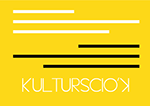
info@kultursciok.com
Skype: sinisca
Italy
France
+33 (0) 642811630
STAY IN TOUCH
Facebook
Twitter
Videos Vimeo
Infos & Disclaimer
Kulturfactory Domicella
Artists willing to stay and create, we offer the possibility to apply for a few days artists residency in our factory space in Domicella. Projects having something very urgent to explore and something very powerful, are welcome to apply for the residency; please write us at : info@kultursciok.com
Interesting links
Here are some interesting links for you! Enjoy your stay :)Pages
- “De l’intime à l’écran : développer le jeu et l’écriture par la poésie, la performance, et le cinéma”
- #CONCERTCLANDESTIN
- #CONCERTCLANDESTIN SAVE
- #TRILOGYREMIX
- #TRILOGYREMIX
- #TRILOGYREMIX save 2024_06_28
- 2024 HAPPENING UNDER VESUVIO
- 2024 HAPPENING UNDER VESUVIO save 2024_06_28
- 2024 HAPPENING UNDER with slider
- 2025 HAPPENING UNDER VESUΛIO
- 2025 HAPPENING UNDER VESUΛIO
- 2026 HAPPENING UNDER VESUΛIO
- About
- Développer le jeu et l’écriture par la poésie, la performance et le cinéma
- EDUCATION/LABS/SOCIAL ACTION
- GARDEN PARTY
- HAMLET UNCUT
- Happening under Vesuvio
- HAPPENING UNDER VESUVIO 2023
- HAPPENING UNDER VESUΛIO 2026
- Homepage
- Homepage – new 2025
- Homepage – new 2025 – senza spazio
- Homepage – new 2025 – spazio stretto
- Homepage – new 2025 2
- Homepage – save avant video 01/10/2025
- Homepage new
- Homepage new save 2024_05_14
- Homepage save 17/05/2021
- Homepage save 2021 09 17
- Homepage-
- Infos & Disclaimer
- J’AI BRÛLÉ DANS TES YEUX. JE BRÛLE.
- KULTURFACTORY
- LES VOLEURS DE JAMBON
- MEDEA’S VISIONS
- Oreste
- ORESTE WILL BE BACK
- ORESTE WILL BE BACK save 2021 09 17
- Politique de confidentialité
- Politique relative aux cookies
- SCARLET COFFEE / CABARET CONTEMPORAIN
- SERTAO
- SIBYL SESSIONS
- SIDE PROJECTS
- test video
- VIETATO BALLARE/INTERDIT DE DANSER
- WORKSHOPS
Categories
- No categories


